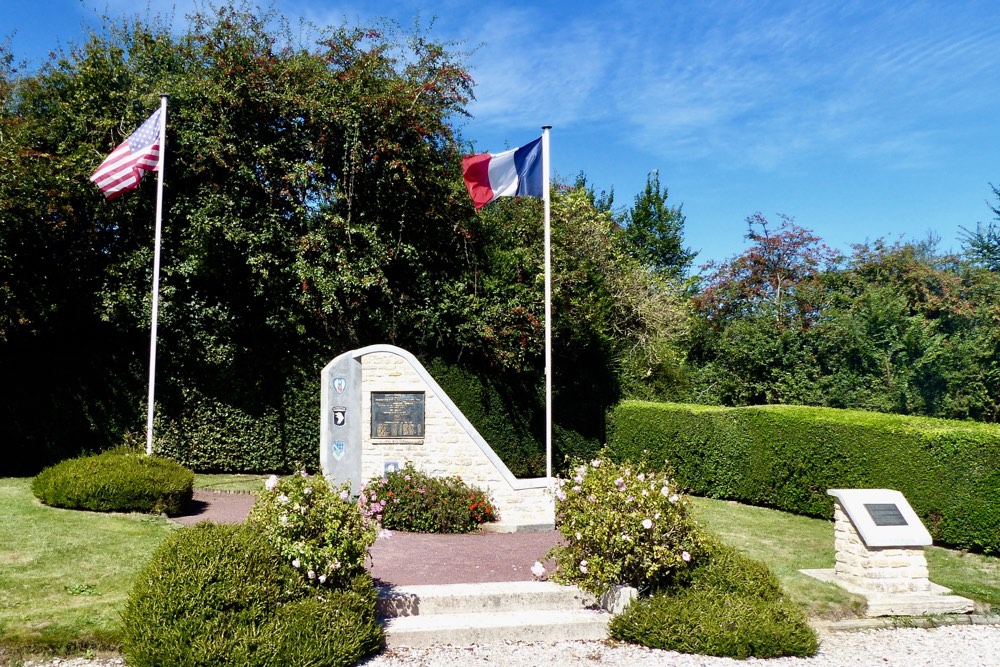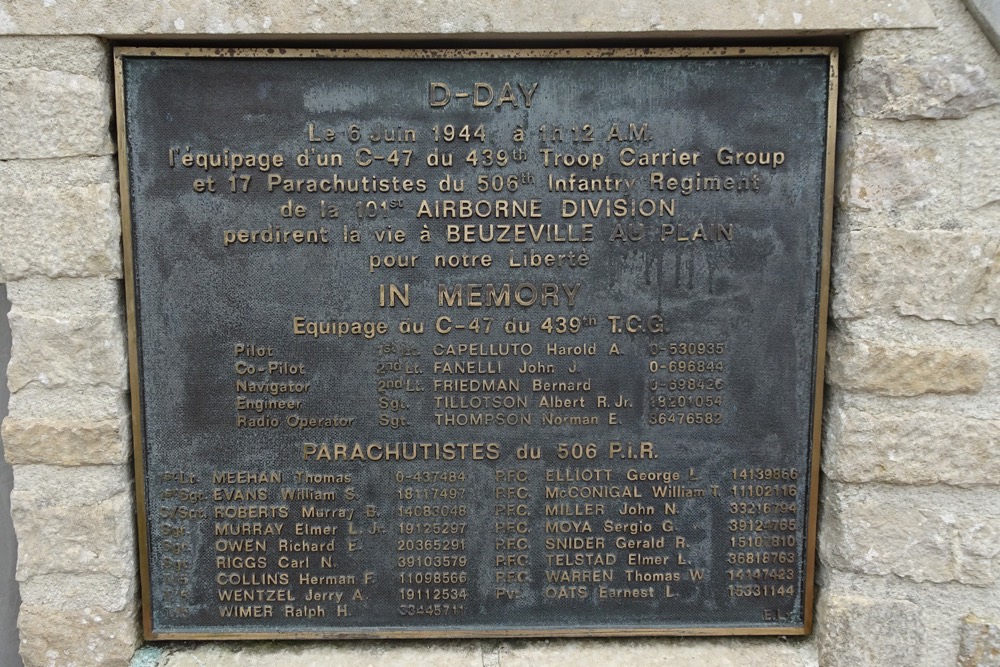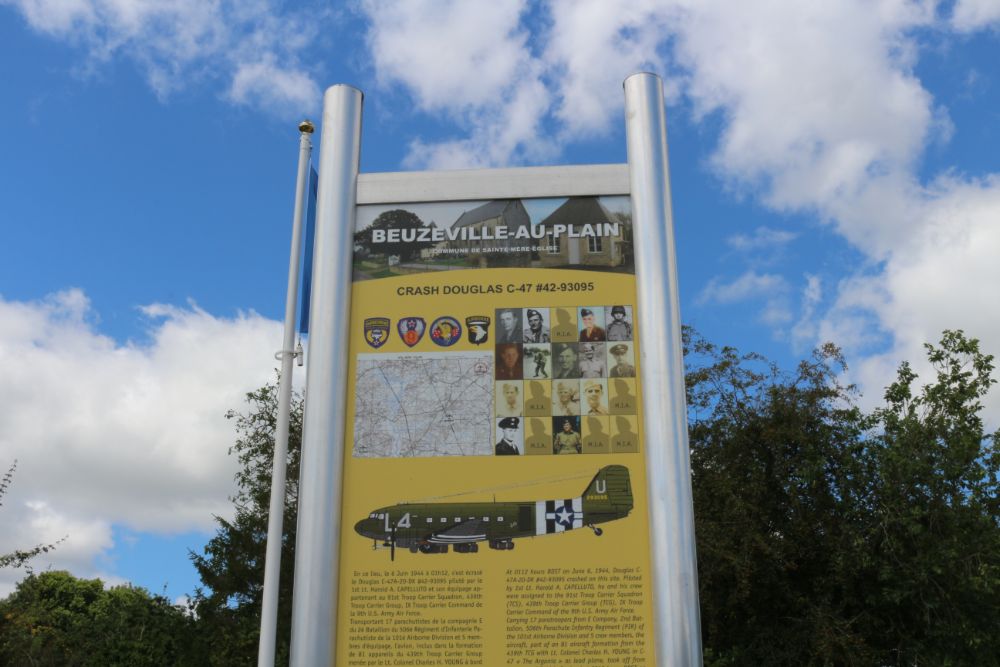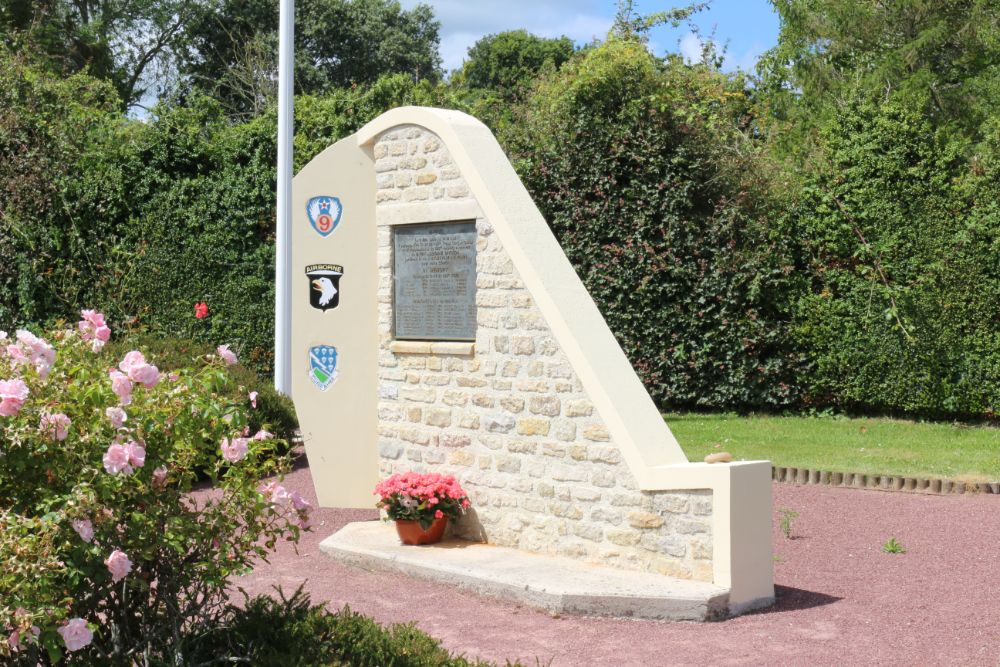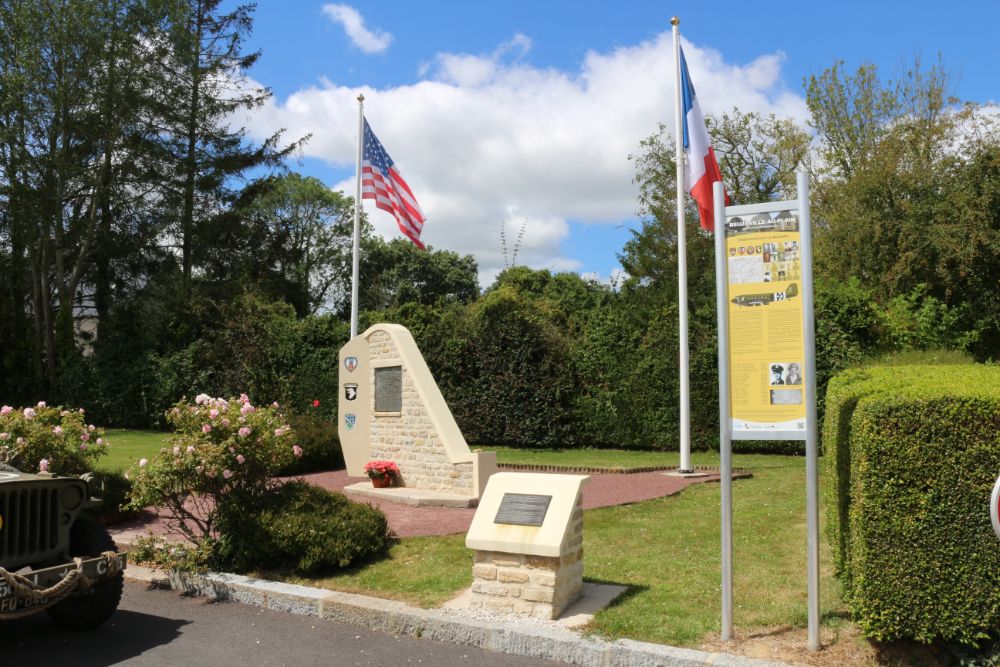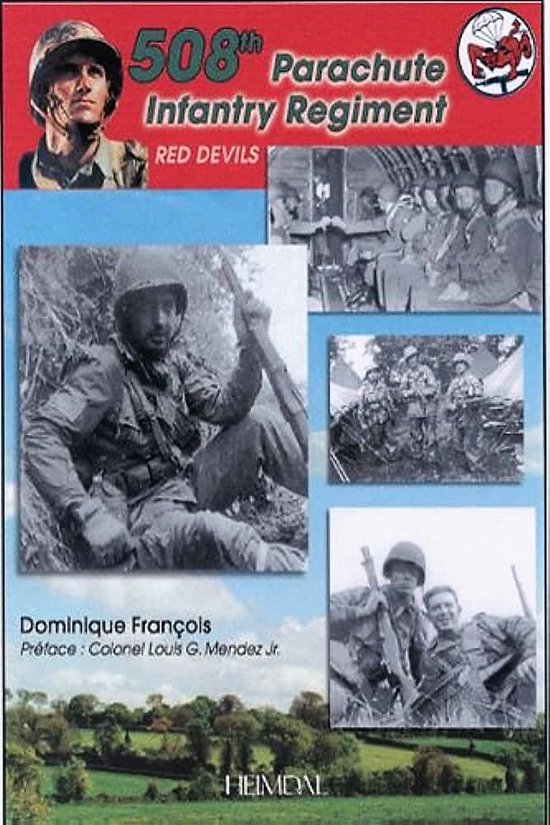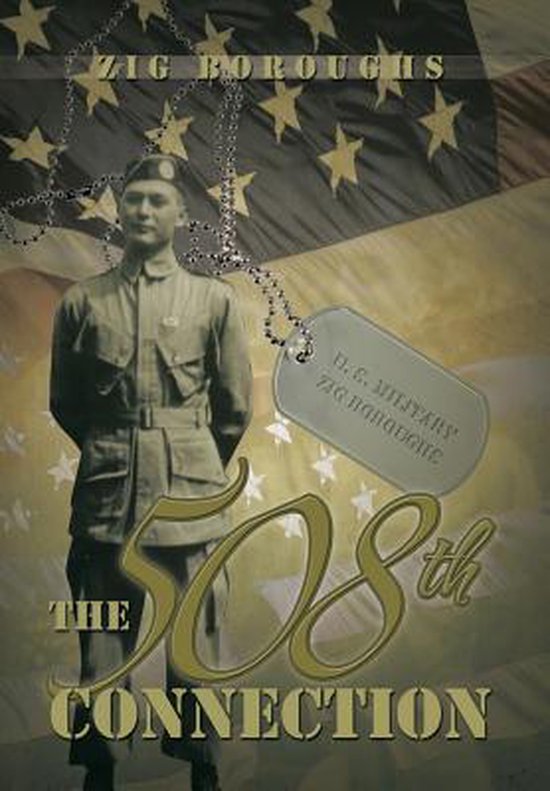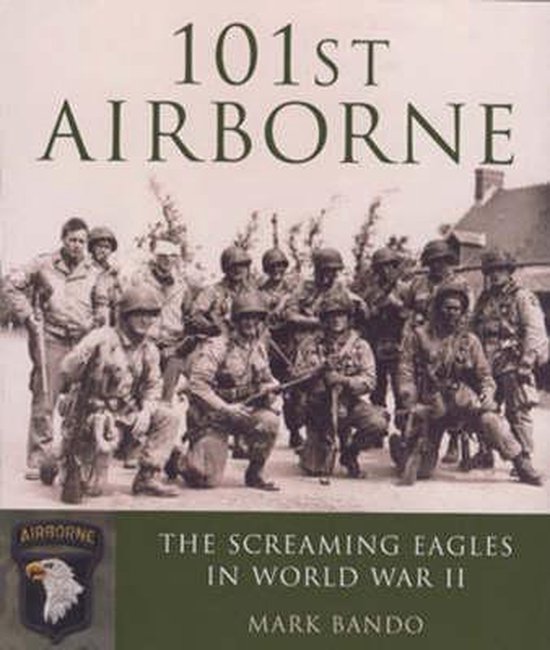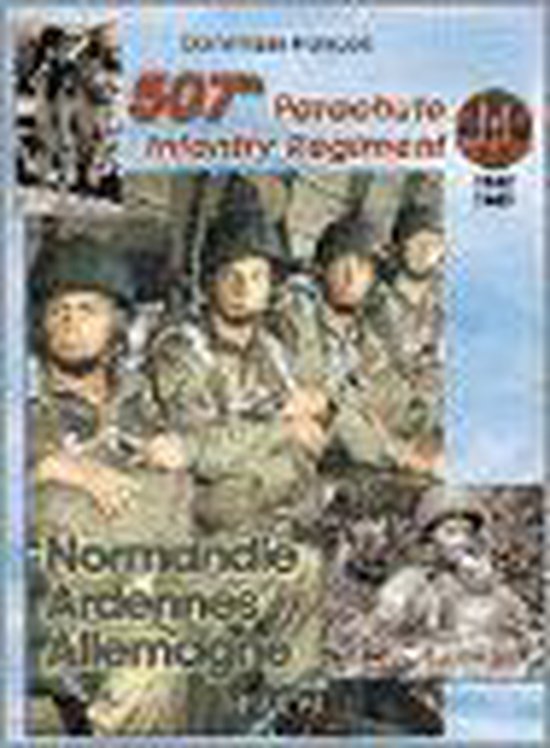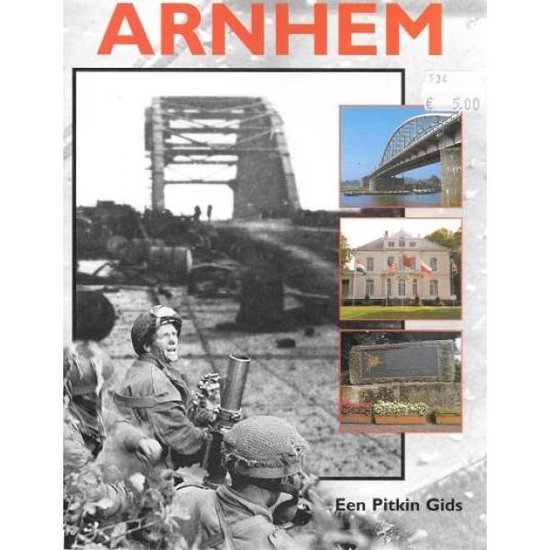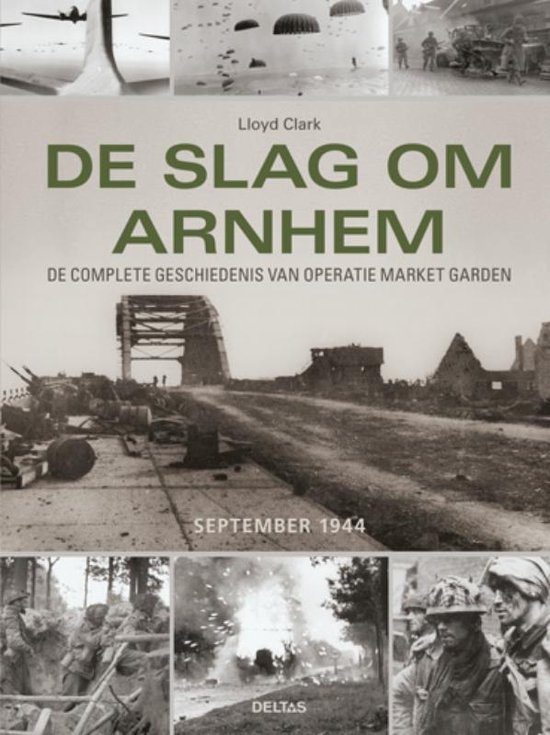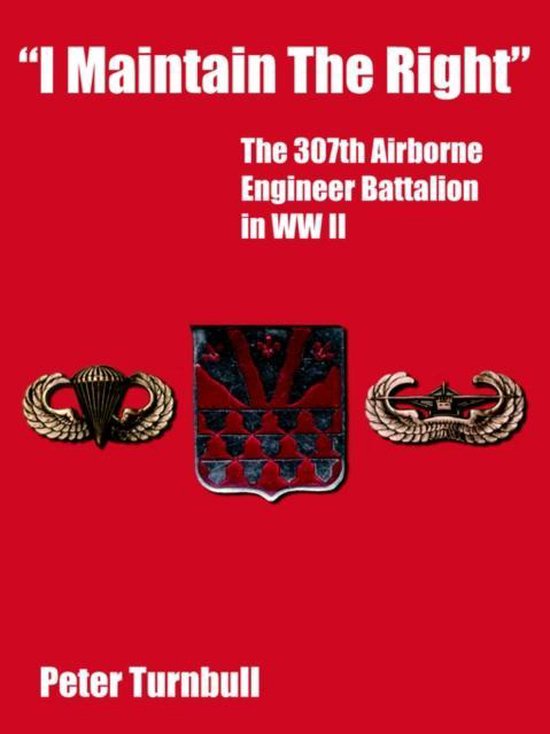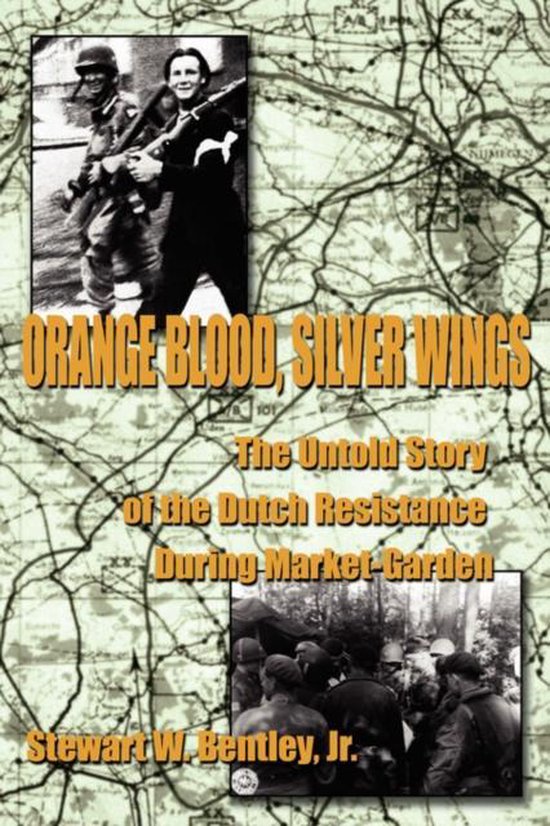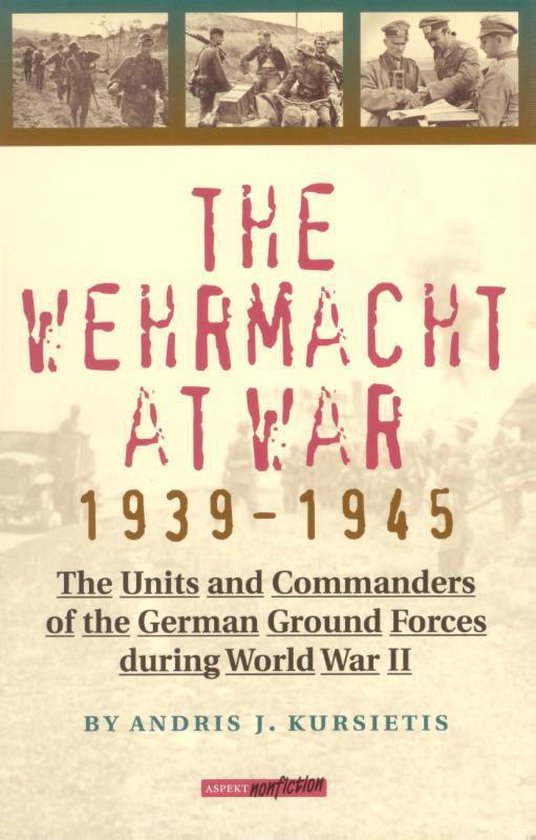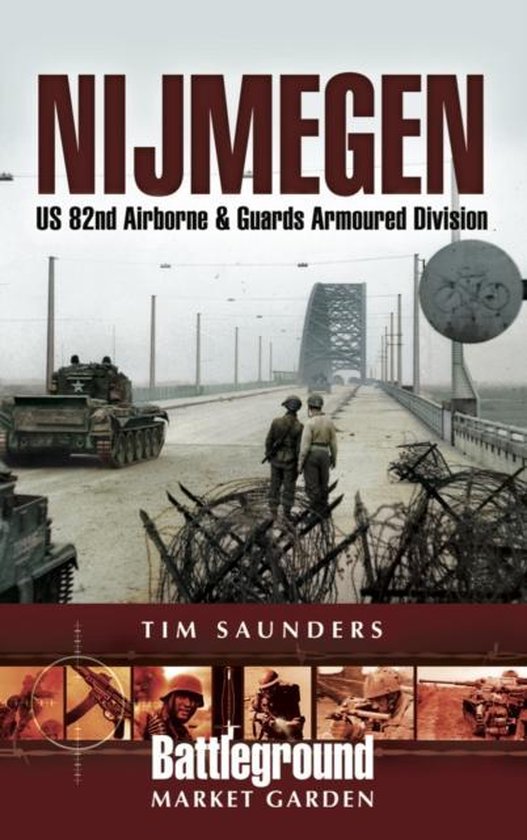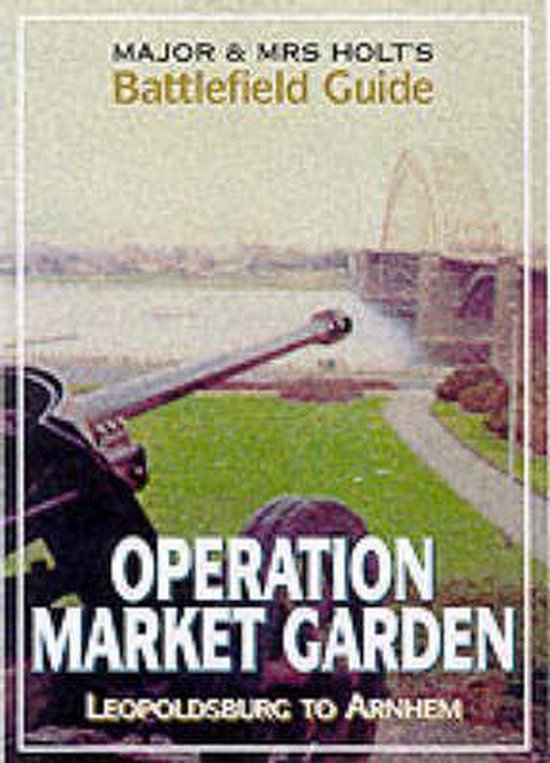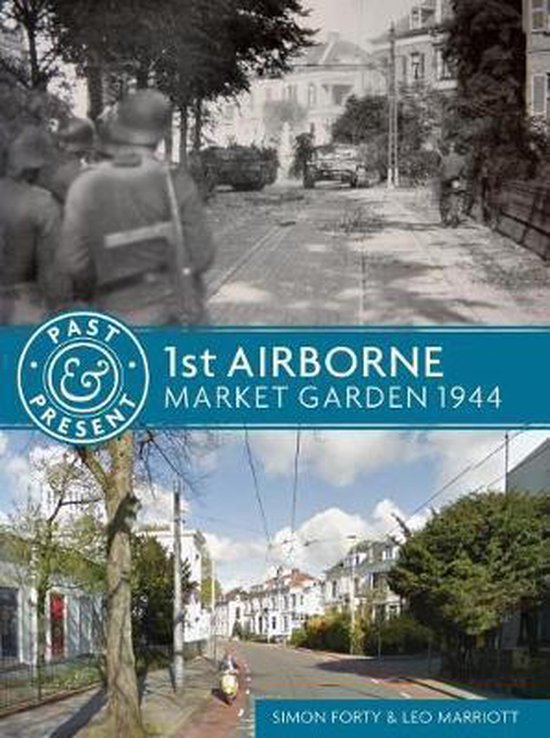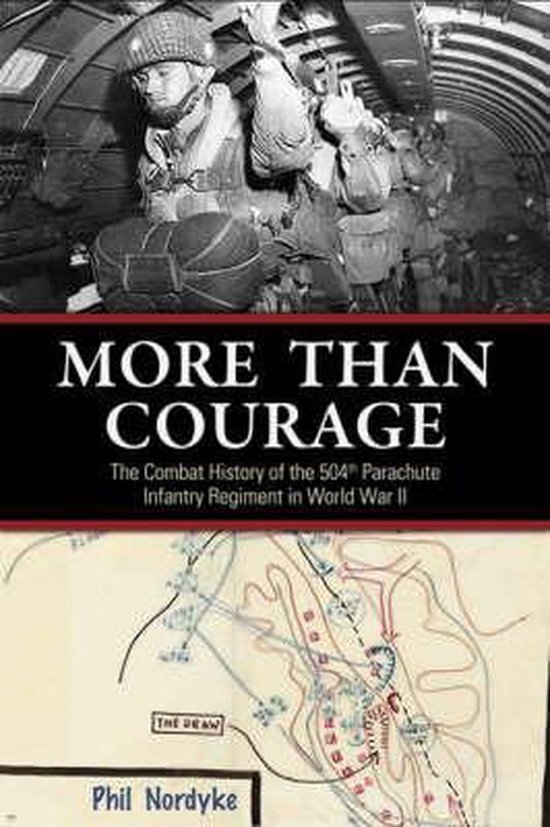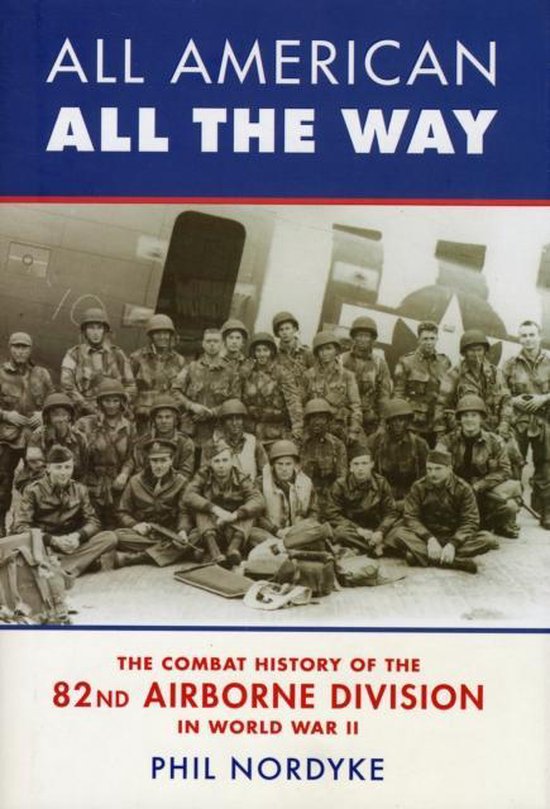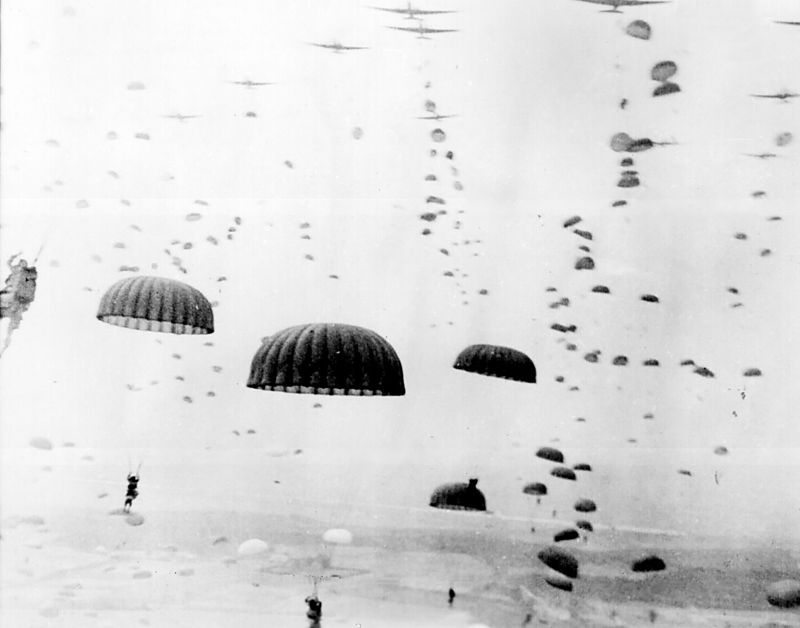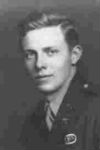Memorial Currahee Beuzeville-au-Plain
On June 5th, 1944, the largest airborne landing fleet in history [till operation Market Garden, later in 1944] departed from England in the direction of occupied France. Among them were thousands of paratroopers of the US 82nd and 101st Airborne Infantry Divisions. From the various English airstrips hundreds of airplanes took of, carrying paratroops or dragging gliders behind them.
The aircraft with the paratroops had been provided with special flight numbers for this operation. The troopers were equipped with a small shield with the flight number written on it in order to facilitate the logistics. In this way Lt. Thomas Meeham and Lt. Richard D. Winters of the 506th Parachute Infantry Regiment had been allocated flight numbers 66 and 67. The official document of Operation Neptune, dated 5th July, 1944, shows that Thomas Meeham and his men were allotted to "Chalk No. 66". (This referenced to the chalk markings on the airplane.)
Flight #66 was hit by the German FLAK and crashed into the ground near Ste. Mère Eglise, Close to Beuzeville Au Plain… No survivors. Already the next day, on D-Day, a photograph was taken on the very crash site. Forrest Guth took a picture of his buddy Eubanks, in the middle of the wreck. At that moment they were not aware that this was the airplane in which their Company Commander and Headquarters Staff had been killed.
Ultimately the 17 bodies of the paratroopers were shipped to the United States in order to be buried with military honors. This however, was not to be bestowed on the 5 members of the 439th Troop Carrier Transport, the pilot, his copilot, the navigator, the engineer and radio operator. The Pilot, 1st Lt. Harold A. Capuletto, has been buried on the US war cemetery in Colleville sur Mer. (Plot A, row 9, tomb 19.)
Beginning of the 90’s Guy Lepretre received permission of the mayor of Beuzeville, Mr. Lucien Briard, to trace the wreck and to identify it. In exchange, the community of Beuzeville (less than 40 souls) would be awarded with a monument. The wreckage was soon located and on the crash site personal belongings of the paratroopers were found. A ring belonging to 1st Lt. Thomas Meeham and a dog tag of T/5 Jerry A. Wentzel made the identification rather straightforward.
The monument has been built by "The Forced landing Association" , a French /Belgian foundation that engages in the tracking of aircraft wrecks from World War Two. The monument has been shaped like the tail rudder of a Dakota C-47 and has been designed by Michel Gaudry from the village of Picauville, a stone throw away from Ste. Mère Eglise. Amongst others, Bernard Laniepce from Beuzeville has helped making the monument. Behind the plaque with the names of the paratroopers of the 506th Parachute Infantry regiment and the crew of the Dakota there is an urn containing ashes from the original crash site of flight #66.
Just before the anniversary of D-Day, June 2000, the monument was unveiled: "In memory of the 439th Troop Carrier, 91st Sqaudron and the paratroopers of the 101st Airborne 506th parachute Infantry regiment, E Company". Amongst the witnesses, also Edward Peters III was present, he is the son of Captain Edward Peters, Regimental HQ who was killed on D-Day, 1944. It is a unique monument where you can see the shield of the 9th Airforce, the Screaming Eagle and the Currahee-Shield.
The story of Flight #66 has been incorporated in of "Band of Brothers". The village of Beuzeville au Plain can be easily reached from Utah Beach (Ste. Marie du Mont) and from Ste. Mère Eglise . You will find the monument facing the community building.
Do you have more information about this location? Inform us!
Source
- Text: Don van den Bogert
- Photos: Randy Brandt (1), James Crouch (2), Lennard Bolijn (3, 4, 5)
Related books
Nearby
Museum
- The Airborne Museum - Sainte-Mère-Église
- Atlantikwall - Batterie d'Azeville - Azeville
- Atlantikwall - Museé de la Batterie de Crisbecq - Saint-Marcouf
Point of interest
- Earl's Shed - Sainte-Mère-Église
- M4A4 Sherman Tank Sainte-Mère-Eglise - Sainte-Mère-Eglise
- Sainte-Mère-Église Church - Sainte-Mère-Église
Monument
- Pathfinder Memorial Saint-Germain-de-Varreville - Saint-Germain-de-Varreville
- Memorial Goodman Road Saint-Germain-de-Varreville - Saint-Germain-de-Varreville
- Memorial Carter Road Saint-Germain-de-Varreville - Saint-Germain-de-Varreville
